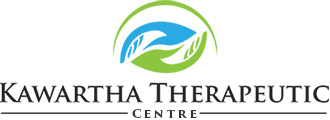Frequently Asked Questions: Active Release Techniques
- What is Active Release Techniques, and for what kinds of injuries is it useful?
- How do overuse injuries occur?
- What is an ART treatment like?
- How does Active Release Techniques work?
What is Active Release Techniques, and for what kinds of injuries is it useful?
Active Release Techniques (ART) is a patented and advanced system of diagnosis and manual treatment for soft-tissue injuries. “Soft-tissue” refers primarily to muscle, tendon, fascia, and nerves. ART is specifically suited to treat cumulative and repetitive strains, postural strains, sports injuries and general “wear and tear”. Headaches, back pain, carpal tunnel syndrome, sciatica, plantar fasciitis, knee sprains and strains, tendonopathies, shin splints, golfer’s and tennis elbow, ilio-tibial band friction syndrome, rotator cuff strains, piriformis syndromes, to name a few, are some of the conditions that can be resolved quickly, and often permanently, with ART. These conditions all have one important thing in common: that is, they often result from injury to over-used muscles.
How do overuse injuries occur?
Over-used muscles (and other soft tissues) change in three important ways:
- Acute injuries (pulls, tears, collisions, etc.)
- Accumulation of small tears (micro-trauma)
- Not getting enough oxygen (hypoxia)
Each of these factors can cause your body to produce tough, dense scar tissue in the affected area. This scar tissue binds up and ties down tissues that need to move freely. As scar tissue builds up, muscles become shorter and weaker, tension on tendons causes tendonitis and nerves can become trapped. This can cause reduced range of motion, loss of strength and pain. If a nerve is trapped you may also feel tingling, numbness and weakness.
What is an ART treatment like?
Every ART session is actually a combination of examination and treatment. The ART provider uses his or her hands to evaluate the texture, tightness and movement of muscles, fascia, tendons, ligaments and nerves. Abnormal tissues are treated by combining precisely directed tension with very specific patient movements. ART is unique in its systematic approach to patient and tissue tolerance because patients can control their active movement during treatment. These treatment protocols – over 500 specific moves – are unique to ART. They allow providers to identify and correct the specific problems that are affecting each individual patient. ART is not a cookie-cutter approach.
How does Active Release Techniques work?
ART works by releasing the degree of tightness and or scar tissue formation that has formed as a result of injury – be it, sports injury, repetitive/cumulative strain or postural strain. Treatment is directed towards muscle, tendon, myofascial and ligament tissue, as well as the scar tissue adjacent to nerves. ART systematically works to improve tissue texture, tension, movement, and ultimately – function.
